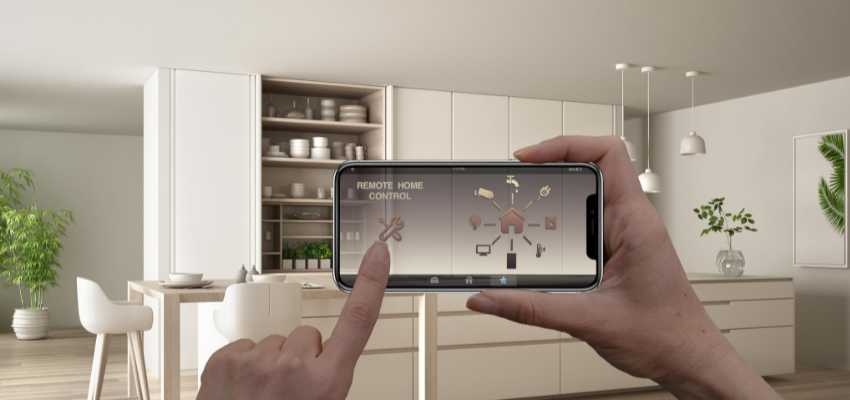Show:
How is the Smart House Software Arranged?
Definition of Smart House A smart house, also known as a smart home, is a residence that has interconnected and automated devices and systems that can be controlled remotely through a network connection. These devices include lighting, HVAC, security systems, entertainment systems, and appliances, among others.

Importance of Smart House Software Smart house software is crucial in enabling homeowners to control and monitor their smart devices and systems from anywhere, providing greater convenience, comfort, and security. It also allows for energy-efficient management of home systems, resulting in reduced energy consumption and lower utility bills.
Components of Smart House Software
The user interface (UI) is the means through which the homeowner interacts with the smart house software. It can take the form of a mobile app, a web-based portal, or a voice-activated assistant. The UI should be intuitive, user-friendly, and visually appealing to enhance the homeowner’s experience.
There are several types of user interfaces that can be used for smart house software, including touch screens, buttons, voice commands, and mobile apps.
A well-designed user interface can significantly impact the usability and functionality of smart house software. It should be easy to navigate, provide real-time feedback, and allow for customization.
Data Storage. Smart house software relies on the storage and retrieval of data from various devices and systems. This data includes usage patterns, preferences, and sensor readings, among others. The data storage component of smart house software is responsible for storing and managing this data.
Smart house software can use various types of data storage, including local storage, cloud storage, and hybrid storage.
The proper storage and management of data are essential in ensuring the efficient operation of smart house software. It also enables the homeowner to access historical usage data for analysis and optimization.
Communication Protocols. Smart house software relies on communication protocols to enable devices and systems to interact with each other. Communication protocols determine how data is exchanged between devices and systems and how they communicate with the smart house software.
Types of Communication Protocols: Some common communication protocols used in smart house software include Wi-Fi, Bluetooth, Zigbee, Z-Wave, and Insteon.
Importance of Communication Protocols: Communication protocols are essential in enabling devices and systems to interact with each other and the smart house software. They ensure seamless communication, data exchange, and real-time updates.

Architecture of Smart House Software
The smart house software architecture consists of three main layers: the presentation layer, the application layer, and the data layer.
- Presentation Layer: The presentation layer is the top layer of the smart house software architecture and is responsible for displaying information to the user. It consists of the user interface and the presentation logic.
- Application Layer: The application layer is the middle layer of the smart house software architecture and is responsible for processing user requests and controlling device and system functionality. It consists of the application logic and the device control logic.
- Data Layer: The data layer is the bottom layer of the smart house software architecture and is responsible for storing and retrieving data from various devices and systems. It consists of the data storage and access logic.
Interaction between Layers
- Presentation Layer and Application Layer: The presentation layer interacts with the application layer by sending user requests to the application layer, which processes them and sends back the necessary information to the presentation layer for display.
- Application Layer and Data Layer: The application layer interacts with the data layer by sending requests for data retrieval or storage. The data layer then retrieves or stores the requested data and sends it back to the application layer.
- Data Layer and Presentation Layer: The data layer interacts with the presentation layer by providing the necessary data for display to the user interface.
IV. Smart House Software Platforms A. Open-Source Platforms Open-source smart house software platforms are freely available software that allows users to modify and distribute the software’s source code.
Advantages of Open-Source Platforms: Open-source platforms offer greater flexibility, customization, and cost savings. They also have a larger community of developers and users, leading to more frequent updates and improvements.
Examples of Open-Source Platforms: OpenHAB, Home Assistant, and Domoticz.
B. Proprietary Platforms Proprietary smart house software platforms are commercial software developed by specific vendors and are not freely available.
Advantages of Proprietary Platforms: Proprietary platforms offer greater support, reliability, and security. They also provide a unified user experience across all devices and systems.
Examples of Proprietary Platforms: Samsung SmartThings, Amazon Alexa, and Google Nest.

Smart House Software Integration
Integration of Smart House Software with Home Automation Systems Smart house software can integrate with home automation systems, such as lighting and HVAC systems, to enable seamless control and monitoring.
Integration of Smart House Software with IoT Devices Smart house software can integrate with various IoT devices, such as smart speakers, cameras, and sensors, to provide enhanced functionality and automation.
Take your movie watching experience to the next level with Gagadget’s expert tips for picking out and integrating the best projector for bedroom into your Smart Home system. Create an immersive cinematic atmosphere from any room in the house!
Integration of Smart House Software with Cloud Computing Smart house software can integrate with cloud computing to enable remote access, backup, and storage of data.
Future of Smart House Software
Advancements in User Interface. Future smart house software is expected to have more intuitive and interactive user interfaces, such as augmented reality and voice-activated assistants.
Advancements in Artificial Intelligence. Smart house software is expected to incorporate more advanced artificial intelligence techniques, such as machine learning and natural language processing, to enable greater automation and personalization.
Advancements in Security and Privacy. Future smart house software is expected to have stronger security and privacy features, such as multi-factor authentication and end-to-end encryption, to protect user data and prevent unauthorized access.
Conclusion
Recap of Importance of Smart House Software Smart house software is essential in enabling homeowners to control and monitor their smart devices and systems from anywhere, providing greater convenience, comfort, and security.
Summary of Smart House Software Components and Architecture Smart house software consists of the user interface, data storage, and communication protocols, and is structured into three layers: the presentation layer, the application layer, and the data layer.
Final Thoughts on the Future of Smart House Software. The future of smart house software is expected to have more advanced user interfaces, incorporate more artificial intelligence techniques, and have stronger security and privacy features.

 Return to Previous Page
Return to Previous Page








